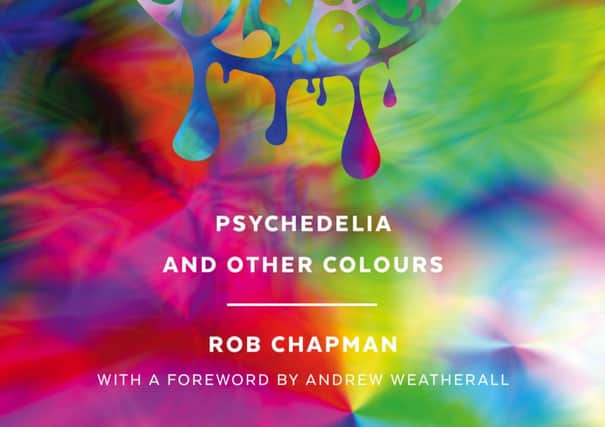Book review: Psychedelia and Other Colours


Who would expect to read about Petula Clark, The Supremes, Joe South and Freda Payne in a book on psychedelia?
Who would then expect them to turn up in the same paragraph as the likes of the Lemon Pipers, the Box Tops and other chart names of the past? And who would have realised that they all actually had one thing in common?
Advertisement
Hide AdAdvertisement
Hide AdBut then you soon learn to expect the unexpected in Rob Chapman’s fairly exhaustive – but never exhausting, in spite of its 600 plus pages – exploration, in crystalline detail, of the history, precedents and impact of LSD on music, fashion and popular culture in general.
No suggestion, of course, that any of those hit makers were ever under the influence of the mind expanding drug themselves. But their late 1960s 45rpm singles Colour My World, No Matter What Sign You Are, Games People Play, Green Tambourine and Cry Like A Baby all featured that psychedelic trapping, the sitar.
Even Payne’s perennial dance floor favourite Band of Gold (recorded in 1969 and a number one in early 1970) tapped into the exotic Eastern flavour, again courtesy of a New Jersey company that had developed an electric version of the instrument. It was played on each and every one of those hits by the same man… Vincent Bell.
While Vinnie (as he was known to his friends) might have been an in-demand session player whose name was relatively unknown outside the recording studios – he was never credited on the paper labels – the book devotes plenty of space to other 1960s musicians who had made, or were making, their mark and embracing the psychedelic vision.
Advertisement
Hide AdAdvertisement
Hide AdNot surprisingly, The Beatles get a chapter of their own, the author maintaining that they were ‘the benchmark by which everything else in the 1960s has to be measured.’
It transpires that at least 50 per cent of the Fab Four first encountered LSD at the home of a well-connected Harley Street dentist who injected it into a sugar cube and put it into the coffee of John Lennon, George Harrison and their respective partners. Harrison later noted that after that, they started putting it into their own coffee!
While some were tripping out in fine style, others were merely tripping themselves up because, like any trend, the psychedelic ‘scene’ had more than its fair share of bandwagon jumpers who cut ridiculous figures in their flowing kaftans, flowery gear and dubious sincerity.
The book is split in to two sections – Psychedelia USA and Psychedelia UK – and Chapman, currently the holder of a Royal Literary Fund Fellowship at the University of Lancaster, presents a convincing argument that the histories of the two could not be more different.
Advertisement
Hide AdAdvertisement
Hide AdFor once, America boasts the longer timeline. A full half century ago LSD became a vital ingredient at informal parties in California, leading to an avant garde scene that endorsed experiments in so-called ‘immersive environments’ where those making and listening to music were bathed in what can only be described as painting with light.
Here in Blighty, as those heady influences inevitably crossed the Atlantic thanks to the celebrity circuit, there was some fine tuning to be done.
Those with altered minds found themselves looking right back and increasingly taking inspiration for their lyrics from their own childhood memories of fairy tales and fairground fun as well as plundering music hall traditions and touching on the casualties of conflict – not so much the Second World War, which was perhaps a little too close for comfort, but rather the dead of Flanders fields.
And yet, despite these mind-warping adventures, the followers of psychedelia continued the habits of a lifetime to make it home in time for tea… laced with LSD or otherwise!
(Faber, hardback, £35)